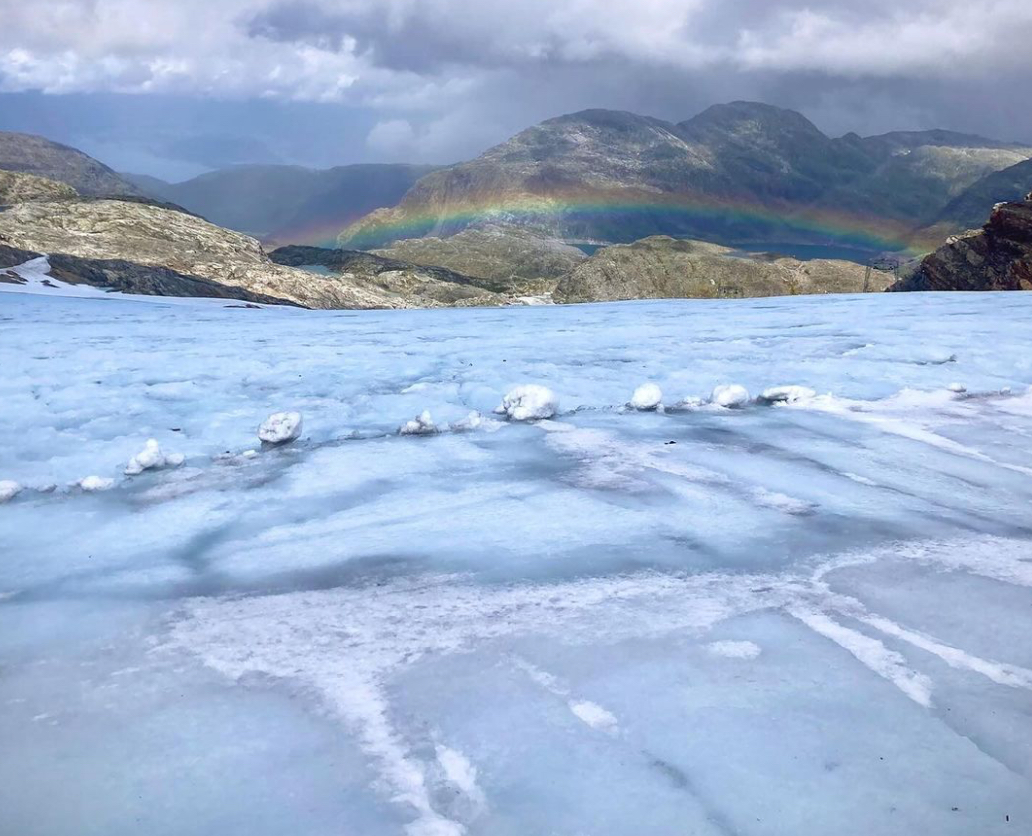
A historic heatwave shuttered the glacier ski area Fonna in Norway last week, with operations ending on August 16. Fonna is one of Norway’s three summer-only ski areas, the other two are Stryn and Galdhøpiggen. Stryn was forced to shut down after just three and a half weeks of operations in mid-June this year, while Galdhøpiggen Sommerskisenter is taking a break from summer training until September 9. Galdhøppigen opened for summer skiing on May 9 and had to reduce operations from June 25 still open due to excessive snowmelt this season. On August 15 the resort had to halt operations but is planning to reopen on September 9. Galdhøpiggen is planning to then operate until November 5.

So far this August, the heatwave has caused rapid melting of snow and ice on the surface of the ice caps at the Norwegian Svalbard Archipelago. Satellites of the European Space Agency, Copernicus, captured images of the large discharge of water and sediment in the Arctic Ocean. Temperatures at Svalbard at the Arctic Circle have been 5°C above average for this time of year and reached a record 20.3°C (68°F) on August 11 and again 20.0°C on August 12. According to researcher Daan van den Broek, who holds a Masters in Atmospheric Science, this is only the seventh time since records began that temperatures in Svalbard broke the 20°C barrier.

As a direct result of the heatwave, the Barents Sea is also experiencing record temperatures, with averages recording 4-5°C above normal for this time of year. Scientists refer to ocean temperatures above the 90th percentile for five or more days in a row as “marine heatwaves”. A study led by scientists from the National Center for Environmental Information (NCEI) published in the Geophysical Research Letters (GRL) shows that the 2023 record-high anomaly in sea surface temperatures is attributed to a long-term warming trend associated with increasing greenhouse gases, a shift to the warm phase of a multidecadal Pacific-Atlantic-Arctic (PAA) mode, and a warming associated with the transition from 2020–23 La Niña events to the 2023–24 El Niño event. The 2023 heatwaves were so strong that the authors referred to the 2023 ones as ‘super-marine heatwaves.’ Marine heatwaves can have significant impacts on ocean life including the collapse of fisheries and the death of coral reefs. The marine heatwaves are not limited to the Arctic zone but can occur all over the world.
Fonna is located on the Folgefonna Glacier at the Hardangerfjord near Bergen, Norway, and typically offers skiing from May to September. Fonna offers 5 km (3 miles) of downhill skiing as well as cross country skiing on top of the glacier and is serviced by a single t-bar. Fonna is located at a base elevation of 3,937 feet (1,200 meters) and tops out at 4,790 feet (1,460 meters).
Galdhøppigen Summer Ski Center is located at the Juvass Glacier, about seven hours north of Fonna. It also features 5 km (3 miles) of downhill skiing and has a base elevation of 6,069 feet (1,850 meters) at the valley in Juvbreen and reaches a lifted altitude of 7,368 feet (2,246 meters).
@rasmusstegfeldt Sums up our ski camp in Norway 🇳🇴 Fonna always spoiling us 😚❄️ @Filipgravenfors #norway #norge #skiing #skitok ♬ original sound – lapsiu